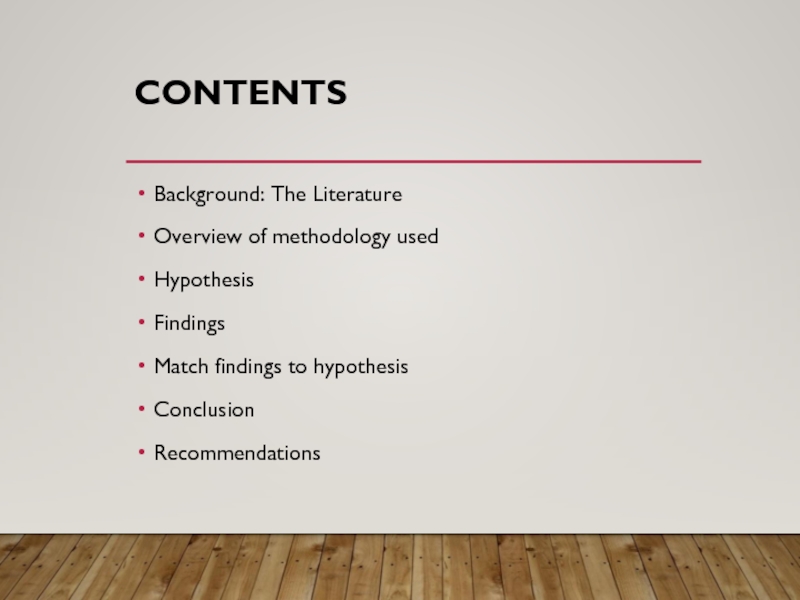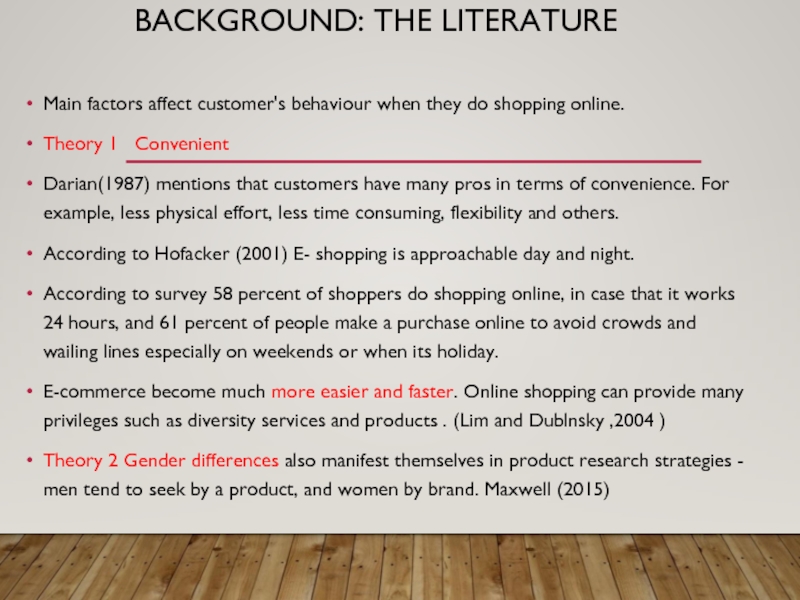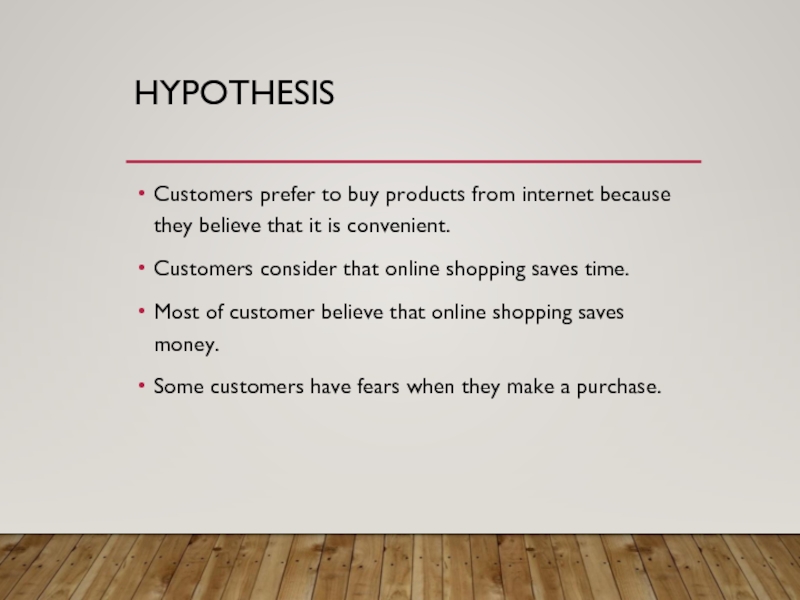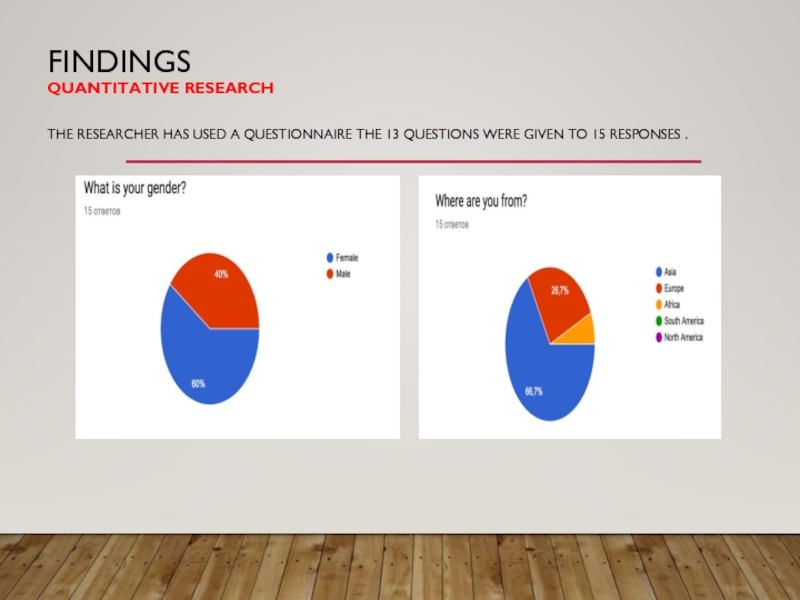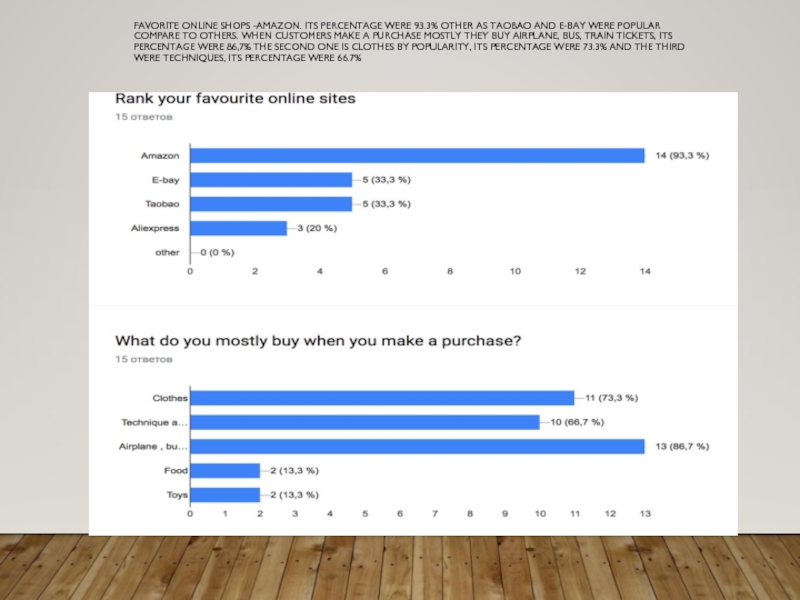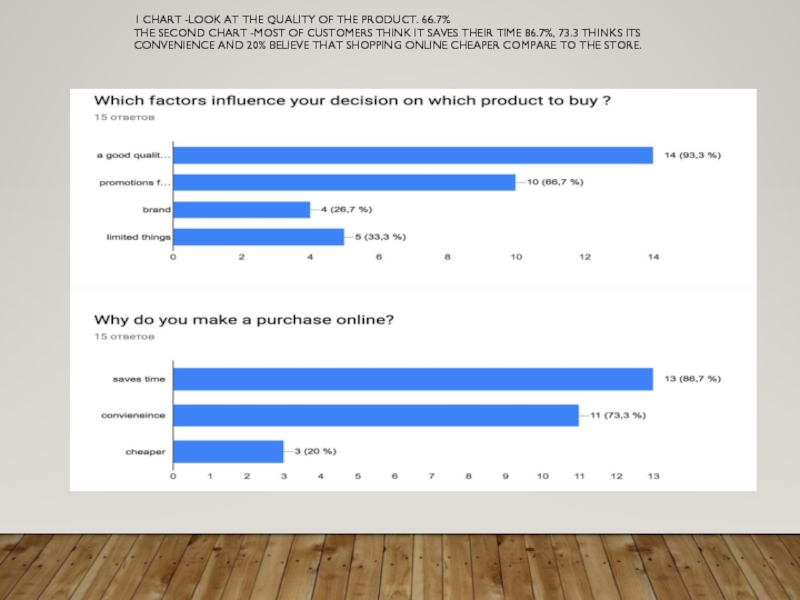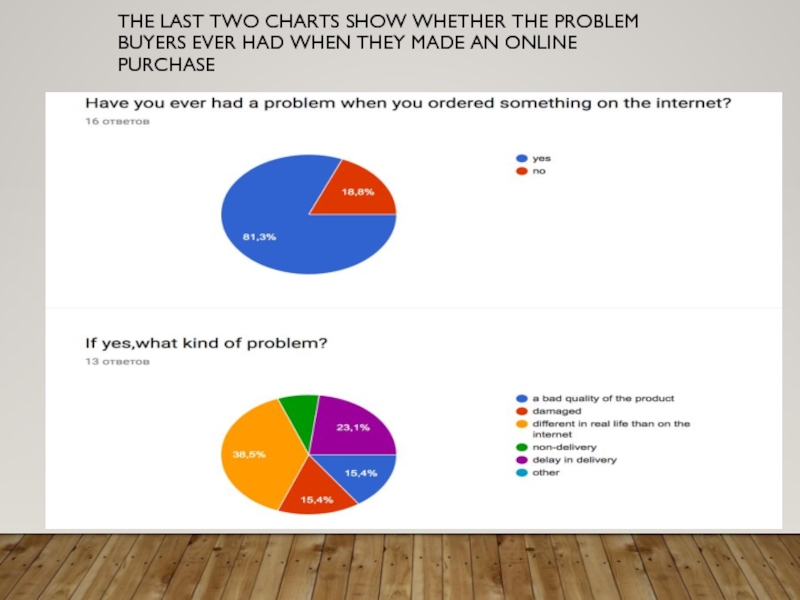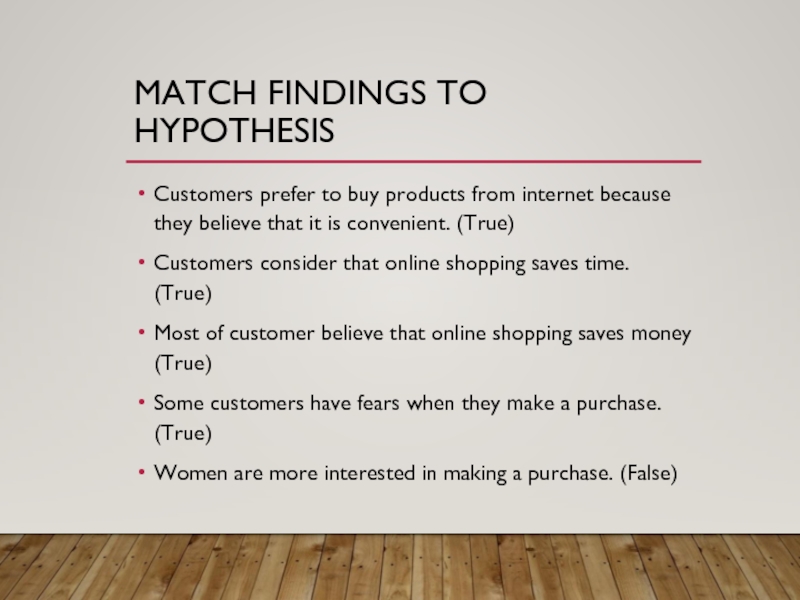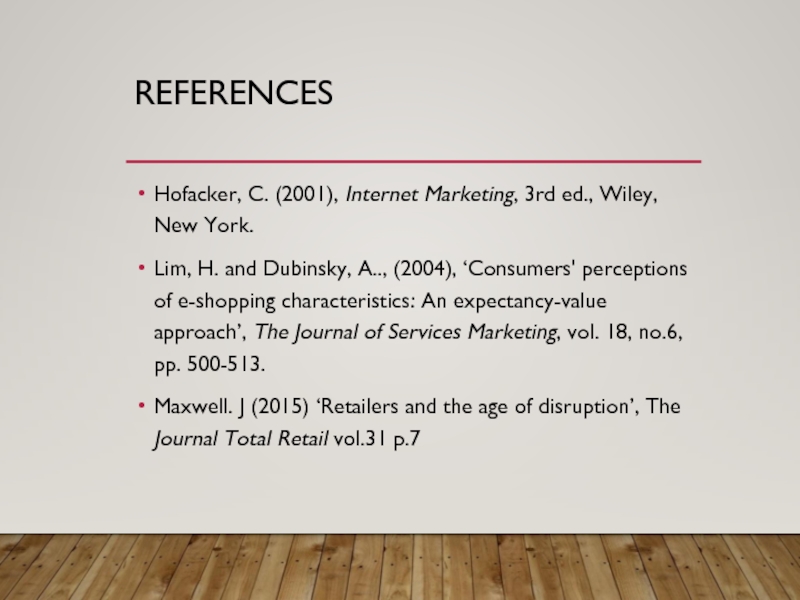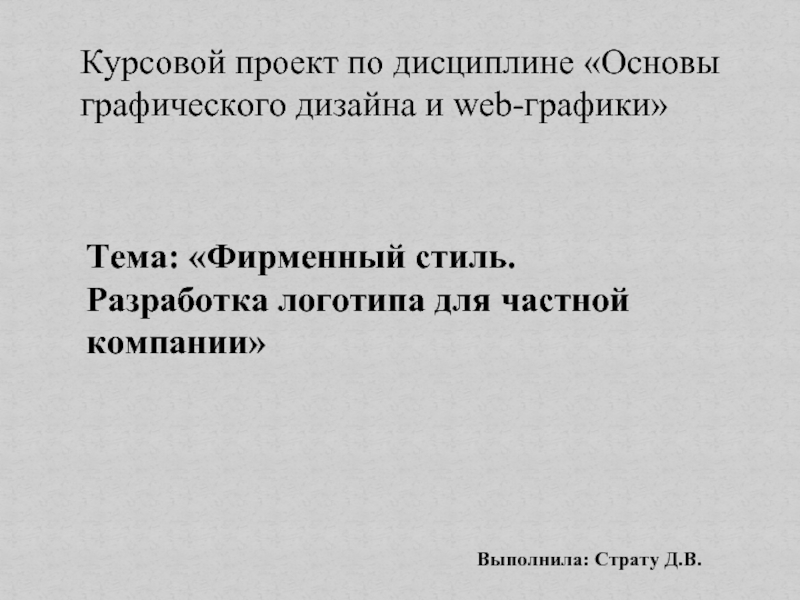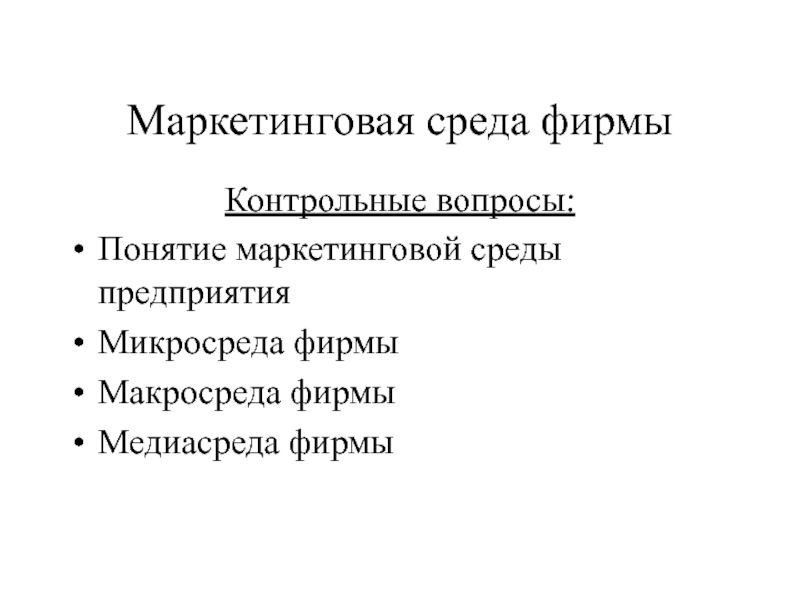26TH OF MAY
KEYWORDS: ONLINE TRADE, CUSTOMERS BEHAVIOUR
- Главная
- Разное
- Дизайн
- Бизнес и предпринимательство
- Аналитика
- Образование
- Развлечения
- Красота и здоровье
- Финансы
- Государство
- Путешествия
- Спорт
- Недвижимость
- Армия
- Графика
- Культурология
- Еда и кулинария
- Лингвистика
- Английский язык
- Астрономия
- Алгебра
- Биология
- География
- Детские презентации
- Информатика
- История
- Литература
- Маркетинг
- Математика
- Медицина
- Менеджмент
- Музыка
- МХК
- Немецкий язык
- ОБЖ
- Обществознание
- Окружающий мир
- Педагогика
- Русский язык
- Технология
- Физика
- Философия
- Химия
- Шаблоны, картинки для презентаций
- Экология
- Экономика
- Юриспруденция
Online shopping behavior of customers презентация
Содержание
- 1. Online shopping behavior of customers
- 2. CONTENTS Background: The Literature Overview of methodology
- 3. BACKGROUND: THE LITERATURE Main factors
- 4. OVERVIEW OF METHODOLOGY USED The research
- 5. HYPOTHESIS Customers prefer to buy products from
- 6. FINDINGS QUANTITATIVE RESEARCH
- 7. FAVORITE ONLINE SHOPS -AMAZON. ITS PERCENTAGE WERE
- 8. 1 CHART -LOOK AT THE QUALITY OF
- 9. THE LAST TWO CHARTS SHOW WHETHER
- 10. QUALITATIVE RESEARCH I HAVE INTERVIEWED TWO PEOPLE
- 11. MATCH FINDINGS TO HYPOTHESIS Customers prefer
- 12. CONCLUSION This research had discovered and
- 13. RECOMMENDATIONS limiting factor of this project was
- 14. REFERENCES Hofacker, C. (2001), Internet Marketing, 3rd
- 15. THANK YOU FOR ATTENTION!
Слайд 2CONTENTS
Background: The Literature
Overview of methodology used
Hypothesis
Findings
Match findings to hypothesis
Conclusion
Recommendations
Слайд 3BACKGROUND: THE LITERATURE
Main factors affect customer's behaviour when they do shopping
online.
Theory 1 Convenient
Darian(1987) mentions that customers have many pros in terms of convenience. For example, less physical effort, less time consuming, flexibility and others.
According to Hofacker (2001) E- shopping is approachable day and night.
According to survey 58 percent of shoppers do shopping online, in case that it works 24 hours, and 61 percent of people make a purchase online to avoid crowds and wailing lines especially on weekends or when its holiday.
E-commerce become much more easier and faster. Online shopping can provide many privileges such as diversity services and products . (Lim and Dublnsky ,2004 )
Theory 2 Gender differences also manifest themselves in product research strategies - men tend to seek by a product, and women by brand. Maxwell (2015)
Theory 1 Convenient
Darian(1987) mentions that customers have many pros in terms of convenience. For example, less physical effort, less time consuming, flexibility and others.
According to Hofacker (2001) E- shopping is approachable day and night.
According to survey 58 percent of shoppers do shopping online, in case that it works 24 hours, and 61 percent of people make a purchase online to avoid crowds and wailing lines especially on weekends or when its holiday.
E-commerce become much more easier and faster. Online shopping can provide many privileges such as diversity services and products . (Lim and Dublnsky ,2004 )
Theory 2 Gender differences also manifest themselves in product research strategies - men tend to seek by a product, and women by brand. Maxwell (2015)
Слайд 4OVERVIEW OF METHODOLOGY USED
The research work has used primary and secondary
resources.
The research has both used qualitative and quantitative methods to collect the data.
The researcher has used a questionnaire and interviews
The research has both used qualitative and quantitative methods to collect the data.
The researcher has used a questionnaire and interviews
Слайд 5HYPOTHESIS
Customers prefer to buy products from internet because they believe that
it is convenient.
Customers consider that online shopping saves time.
Most of customer believe that online shopping saves money.
Some customers have fears when they make a purchase.
Customers consider that online shopping saves time.
Most of customer believe that online shopping saves money.
Some customers have fears when they make a purchase.
Слайд 6FINDINGS QUANTITATIVE RESEARCH THE RESEARCHER HAS USED A QUESTIONNAIRE THE 13
QUESTIONS WERE GIVEN TO 15 RESPONSES .
Слайд 7FAVORITE ONLINE SHOPS -AMAZON. ITS PERCENTAGE WERE 93.3% OTHER AS TAOBAO
AND E-BAY WERE POPULAR COMPARE TO OTHERS. WHEN CUSTOMERS MAKE A PURCHASE MOSTLY THEY BUY AIRPLANE, BUS, TRAIN TICKETS, ITS PERCENTAGE WERE 86,7% THE SECOND ONE IS CLOTHES BY POPULARITY, ITS PERCENTAGE WERE 73.3% AND THE THIRD WERE TECHNIQUES, ITS PERCENTAGE WERE 66.7%
Слайд 81 CHART -LOOK AT THE QUALITY OF THE PRODUCT. 66.7% THE
SECOND CHART -MOST OF CUSTOMERS THINK IT SAVES THEIR TIME 86.7%, 73.3 THINKS ITS CONVENIENCE AND 20% BELIEVE THAT SHOPPING ONLINE CHEAPER COMPARE TO THE STORE.
Слайд 9 THE LAST TWO CHARTS SHOW WHETHER THE PROBLEM BUYERS EVER HAD
WHEN THEY MADE AN ONLINE PURCHASE
Слайд 10QUALITATIVE RESEARCH I HAVE INTERVIEWED TWO PEOPLE ABOUT SHOPPING ONLINE. I
HAVE ASKED SOME QUESTIONS SUCH AS ‘WHAT WOULD YOU RECOMMEND TO IMPROVE ONLINE SHOPPING?’
improve the work of the sites to which shopping is done.
to provide photos with as real that they look
Слайд 11MATCH FINDINGS TO HYPOTHESIS
Customers prefer to buy products from internet because
they believe that it is convenient. (True)
Customers consider that online shopping saves time. (True)
Most of customer believe that online shopping saves money (True)
Some customers have fears when they make a purchase. (True)
Women are more interested in making a purchase. (False)
Customers consider that online shopping saves time. (True)
Most of customer believe that online shopping saves money (True)
Some customers have fears when they make a purchase. (True)
Women are more interested in making a purchase. (False)
Слайд 12CONCLUSION
This research had discovered and evaluate different theories,
The research
and analysis of this study was developed by using a primary and secondary resources which have included questionnaire and interviews. Questions and the interviews allowed to do a full analysis of research thanks to participants which were involved in the process, due to participants we got they are opinions and perceptions about making a purchase online.
Слайд 13RECOMMENDATIONS
limiting factor of this project was lack of the materials relating
to a subject
It would be good for the library to have more resources and books on this topic.
It would be good for the library to have more resources and books on this topic.
Слайд 14REFERENCES
Hofacker, C. (2001), Internet Marketing, 3rd ed., Wiley, New York.
Lim, H.
and Dubinsky, A.., (2004), ‘Consumers' perceptions of e-shopping characteristics: An expectancy-value approach’, The Journal of Services Marketing, vol. 18, no.6, pp. 500-513.
Maxwell. J (2015) ‘Retailers and the age of disruption’, The Journal Total Retail vol.31 p.7
Maxwell. J (2015) ‘Retailers and the age of disruption’, The Journal Total Retail vol.31 p.7

